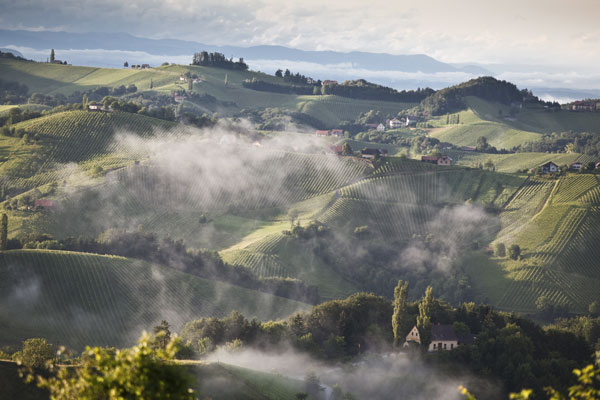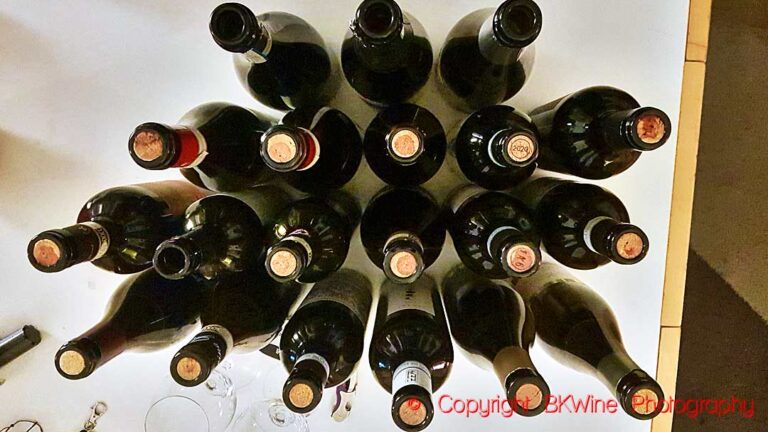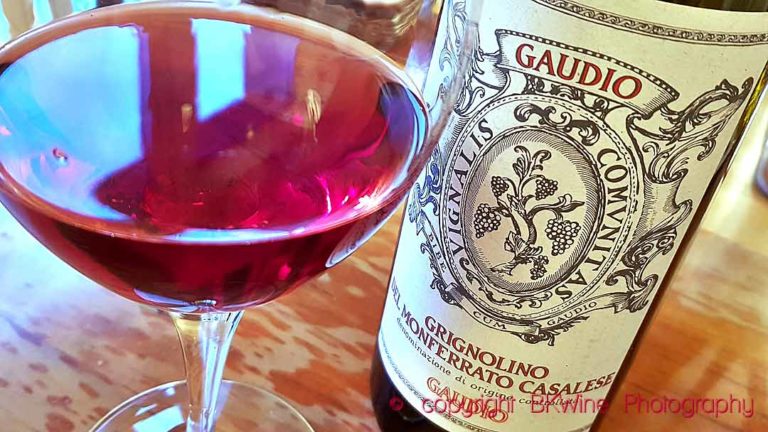Two years ago, my overall impression from Handpicked’s range tasting was very positive. It focused on smaller producers who had “something extra” that can make the difference in a large wine selection. (Handpicked Wines is a Swedish importer specialising in wines from small-ish producers.)
It was therefore with great expectations that I looked forward to this year’s tasting of the range and also to the company’s 10th anniversary. More than 100 wines, both red and white and some rosé were there to try.
Italy
Like previously Italy constituted the core of the product range with many goodies from established producers, but also some newcomers that deserve to be mentioned. For example the Torre dei Beati in the Abruzzi which among other things showed an exciting organic wines from 100% Pecorino, Giocheremo con i fiori 2014 (~15 euro, all prices quoted are estimates based on Swedish retail prices).
Another interesting new wine was Gricos Aglianico del Vulture DOC 2012 from Basilicata, made from 100% Aglianico. Herbaceous with soft tannins, ideal for a lamb stew. Produced by Luciana di Piccin Fabrizio. (~13 euro).
A new producer from Umbria with organic wines were Cantina Roccafiore whose Roccafiore Prova d’Autore 2012 was really good with soft fruitiness, sandy tannins and long finish. (~19 euro).
Moving northward I found a new producer in Trentino with a well-made organic “food wine” made from 100% Manzoni, Cesconi Manzoni bianco DOC 2013. The grape is interesting because it is a good example of the many crossing experiments that the regions in northeast Italy are good at. Manzoni bianco was created by Professor Luigi Manzoni through a cross between Pinot Blanc and Riesling. Like its parents the Manzoni bianco grape thrives best in cooler climates. ~16 euro. The producer is Cesconi. The same producer also makes a good Merlot cuvée, Moratel Rosso, that also contains some Lagrein, Teroldego and cabernet sauvignon. ~18 euro.
From Trentino it is a short step to Piedmont and here my attention was caught by a few well-made nebbiolo wines from Azienda Agricola Gagliasso, first Gagliasso Ciabot Russ Nebbiolo 2012 from a vineyard called Ciabot Russ and classified as Langhe Nebbiolo (~18 euro). Its big brother, Barolo Tre Utin 2011, seemed very promising and very affordable at 26 euro.
A very typical nebbiolo was found in Nervi Gattinara DOCG 2010 from Azienda Vitivinicola Nervi (~22 euro).
At the well-known producer Pecchenino I found a very well made white wine cuvee from 60% Chardonnay and 40% Sauvignon Blanc, a rare mixture that, in this case gives a tasty, well-balanced wine. Aged in French oak for 9 months has given just enough nuances to the fruit. Langhe Bianco DOC Pecchenino Maestro 2013 (~16 euro).
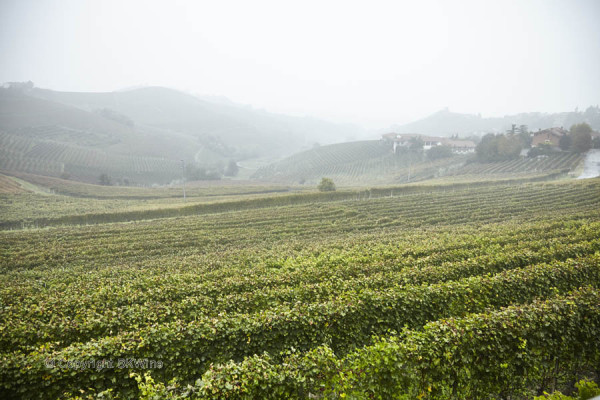
Portugal
Just like two years ago, the winemaker Sandra Tavares da Silva from Portugal was well represented with wines both from Quinta da Chocapalha and her Wine & Soul.
With a flavourful fish dish I would happily drink Chocapalha Reserva Branco 2009 made from chardonnay and viosinho (~19 euro), and among the reds Wine & Soul’s premium wine Pintas Red 2012 is in a class of its own with dark fruit, delightfully chewy and a long finish. Can be drunk now to strong meat dishes, but deserves to be aged for a few years. ~52 euro.
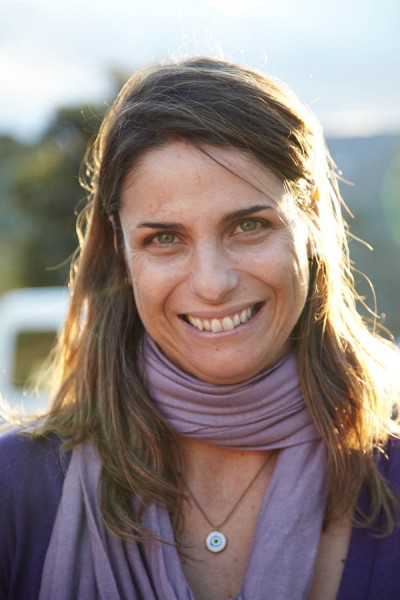
Germany
From Franconia and Weingut Stadt Klingenberg came two Spätburgunder which were agreeable acquaintances. First, the entry-level wine Klingenberg Buntsandstein Spätburgunder 2013, had aromas of red fruit and a good acidity with clean fruit rounded off by 6-8 months ageing in large oak barrels. (~18 euro).
The top wine, Klingenberg Spätburgunder “R” 2013, was made from grapes from 50 years old vines on the best locations. The wine fermented without adding cultured yeast and aged 15 months in oak barrels and is unfiltered. (~42 euro).
USA
Over to the United States and the State of Washington’s biggest wine region, Columbia Valley, where among other things we find the producer l’Ecole 41, who among the whites had a nice Bordeaux challenger in the form of L’Ecole Columbia Valley Semillon 2013, with 87% Semillon and 13% Sauvignon Blanc. (~16 euro).
Among the reds I opted for L’Ecole Merlot Columbia Valley 2012, that in addition to Merlot also has some Cabernet Franc and Petit Verdot. (~28 euro).
Some really great wines came from the Betz family also in the same state. My favourite was a Chateauneuf-du-Pape-inspired cuvée named Betz Bésoleil 2011 whose main grape was Grenache, but also contained Cinsault, Mourvèdre and Syrah. It is good for a Provencal spiced lamb stew. (~40 euro).
In Washington the self-taught Charles Smith is popular and the news from him showed some prestige wines, for example under the name of K Vintners, with grapes that are hand-picked, foot treaded and fermented with natural yeasts. A viognier, with good acidity and fine floral nose and taste can compare well with a Condrieu without blushing. K Art den Hoed Viognier 2014 at ~24 euro.
Another series is called Substance where the Substance Sauvignon Blanc 2013 was elegant and typically for the grape not unlike a Pouilly-Fumé. ~28 euro. In these series from Charles Smith, there is good material for a comparison of wines from the Old and the New World.
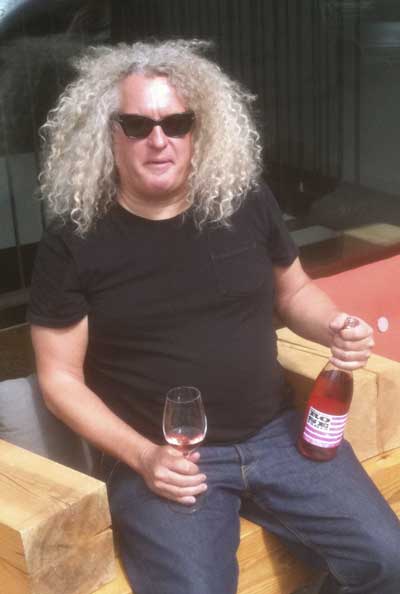
Still in the US, but now in California I liked the producer Birichino, or “troublemaker” in Italian. The two winemakers, Alex Krause and Randall Grahm, want among let you know where they stand.
It was hard not to be impressed by the wines, a Zinfandel, Birichino St Georges Zinfandel Old Vines 2013 (~22 euro), with fine acidity, clean fresh fruit and some hints of liquorice. The oak from the partial barrel ageing gives a nice rounding-off and the aftertaste is long. A really fresh zinfandel!
Birichino Cinsault Bechthold Vineyard 2012 is made from fruit from ungrafted vines that were planted in 1886 and have managed the attacks from the wine louse thanks sand and clay in the soil. The wine is elegant with flavours of red berries, spices agreeable tannins. (~22 euro).
Also the grapes for Birichino Besson Vineyard Grenache 2012, come from old vines, in this case 100 years old. Besson is located in the Central Coast region. Very concentrated cherry fruit and agreeable tannins make the acquaintance a pleasant one. (~21 euro).
Also this producer’s vineyard-denominated pinot noir Birichino Pinot Noir Saint Georges Vineyard 2012 was very well made and grape-typical.
Austria
And lastly, but first in the alphabet I come to Austria. Geyerhof in Kremstal produces a very well made Gruner Veltliner, Geyerhof WildWux 2013, with aromas of pears, peppery and slightly bitter finish it feels very typical for this Austrian grape. (~17 euro).
In summary, I was not disappointed, but my expectations were fulfilled to a great extent and I wish Margareta Lundeberg and her colleagues continued success in sniffing out fun wines from exciting producers.
Carl-Erik Kanne is a long time wine enthusiast and fervent wine taster. He reports from wine tastings and wine events in Stockholm for BKWine Magazine.
